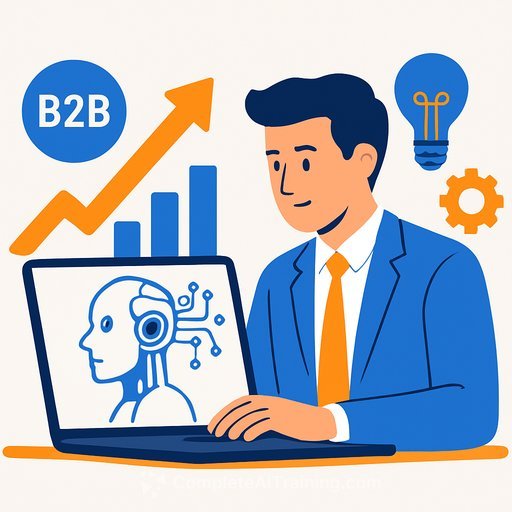Alibaba shows early ROI from AI: 12% lift in ad efficiency - what marketers can use now
Alibaba is reporting measurable gains from its AI rollout in e-commerce, including a 12% boost in advertising efficiency. The company has been investing heavily - 380 billion yuan over three years - and just raised $3.2 billion via convertible bonds to push more into cloud and AI infrastructure.
The standout win so far: AI that personalizes search results and improves virtual try-on flows. For marketers, this is a signal that targeted, on-site AI can move real revenue, not just vanity metrics.
What changed
Kaifu Zhang, who leads AI applications for Alibaba's shopping platforms, said controlled tests show a consistent 12% improvement in ad efficiency. He pointed to two levers: smarter, user-level search ranking and better-performing virtual fitting tools that reduce friction before checkout.
He expects these systems to drive a "very significant" lift during Singles Day - the company's biggest commercial moment of the year.
Why it matters for marketers
Double-digit gains from incremental AI are rare, especially at scale. This validates a practical approach: deploy AI where it directly influences discovery, consideration, and conversion - not as a side project.
- Prioritize AI in the shopping journey: search, recommendations, PDP content, and checkout.
- Tie every model to a clear commercial metric (ROAS, CPA, conversion rate, return rate).
- Run clean A/B or geo-split tests and ship only what beats the control.
Singles Day context
Singles Day pre-sales have started, with the main event on November 11. Last year, combined sales across Alibaba's Tmall, JD.com, and PDD rose 20.1% to 1.11 trillion yuan, per Syntun - even as consumers stayed cautious.
Translation for your Q4: test early, lock wins, and scale during peak windows where traffic and intent compound your gains.
How Alibaba is applying AI (and what you can copy)
- Personalized search and ranking: Use first-party behavior to reorder results and modules. Watch search-to-cart and search-to-purchase rates, not just CTR.
- Virtual try-on and fit guidance: Reduce returns and increase conversion for apparel and accessories. Pilot with high-SKU, high-return categories first.
- Dynamic ad decisioning: Adapt bids and placements based on predicted conversion, inventory, and margin. Optimize for profit, not just revenue.
- Creative variation at scale: Generate and test multiple creative variants with strict brand guardrails and human review.
- Peak-event playbook: Freeze stable models 2-3 weeks before major sales; only ship low-risk improvements. Pre-allocate budget to the top 10% performers by predicted return.
Metrics that matter
- On-site: search relevance score, search-to-cart rate, PDP engagement, conversion rate.
- Ads: ROAS/CPA, assisted conversions, incrementality vs. control.
- Operations: return rate, time-to-render for AI modules, model hit-rate coverage across traffic.
Investor angle (signals for budget decisions)
Alibaba's shares have rallied as funds crowd into AI leaders, though the stock sits more than 65% below its peak. Management is prioritizing AI and cloud investment over near-term margin expansion, citing long-term upside.
Price competition remains a drag across Chinese e-commerce, so efficiency gains from AI are a defensive and offensive lever. If performance keeps improving into Singles Day, expect more budget flowing to AI-first initiatives.
Risks and guardrails
- Model bias and drift: Re-validate models weekly during peaks; monitor shifts in query mix and item availability.
- Over-optimization: Don't chase CTR at the cost of margin or returns. Optimize for contribution profit.
- Latency tax: Set hard limits on response times; degrade gracefully to static experiences when needed.
- Compliance and brand safety: Keep human review for AI-generated creative and product claims.
Quick start checklist for Q4
- Map your top 5 revenue journeys and insert AI only where it reduces friction.
- Stand up a clean A/B framework and pre-register success criteria.
- Launch a virtual try-on or fit-assist pilot in one high-return category.
- Shift 10-15% of budget to models with proven lift; cap experimental spend.
- Report weekly on incremental lift, not just blended ROAS.
Further reading and training
Your membership also unlocks:






